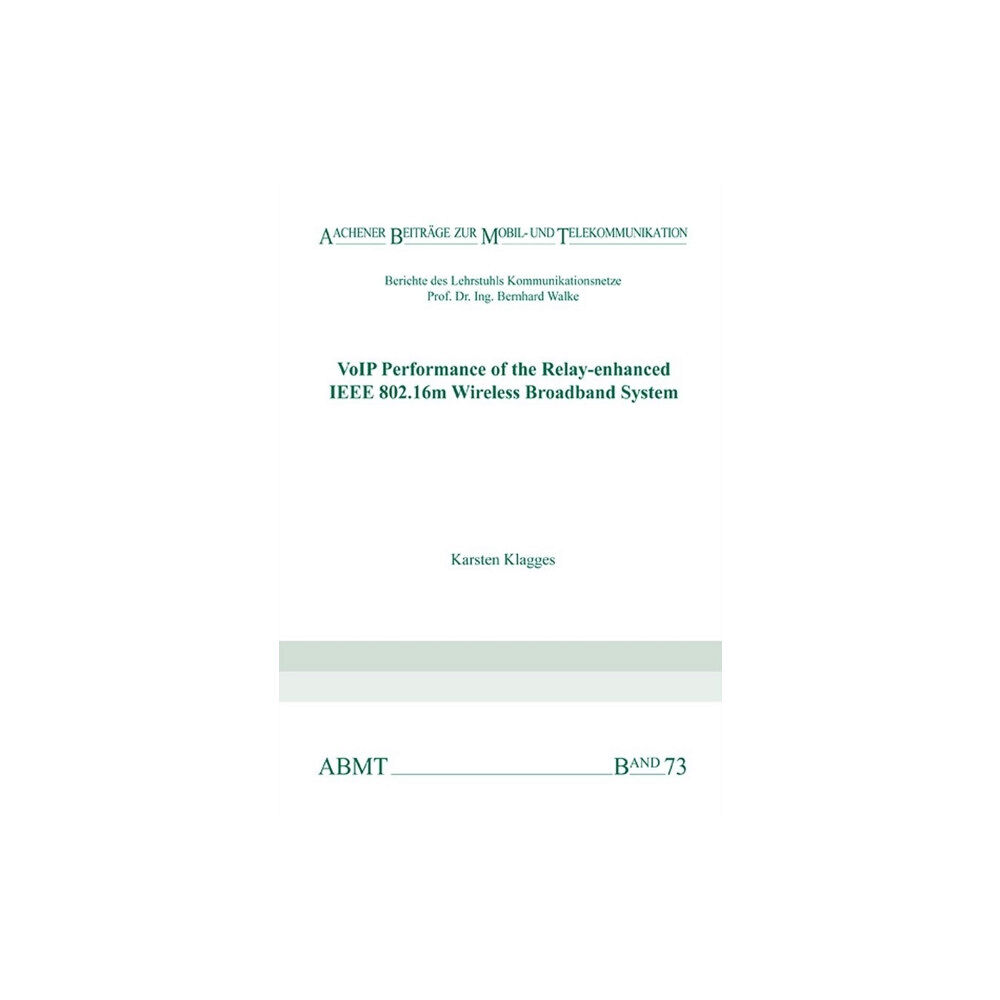- Hem
- Böcker
- Kurslitteratur
- Teknik, Industri & IT
- VoIP Performance of the Relay-enhanced IEEE 802.16m Wireless Broadband System (häftad, eng)

VoIP Performance of the Relay-enhanced IEEE 802.16m Wireless Broadband System (häftad, eng)
In 2007 the International Telecommunication Union, Radiocommunication Sector (ITU-R) published evaluation guidelines for future mobile br...
- Fri frakt
Produktbeskrivning
In 2007 the International Telecommunication Union, Radiocommunication Sector (ITU-R) published evaluation guidelines for future mobile broadband radio networks including a minimal VoIP capacity that the IEEE 802.16m WiMAX system had to meet, proven by system level simulation.
These evaluation guidelines are the foundation of this work that shows that relayenhanced 4G networks do not only meet the requirements but exceed them by far. The key-requirement for packet based VoIP services that has been set in the evaluation guidelines demands that the end-to-end packet delay of at least 98% of user data traffic stays below 50 ms.
Since 2011 proposals of ComNets to implement relays into mobile radio networks to increase system capacity are part of all 4G systems (LTE and WiMAX).
This work investigates the voice over IP (VoIP) capacity of the relay-enhanced WiMAX system by system simulation. The work presents a modular approach that has been developed by my colleagues and myself to implement the WiMAX protocol stack, also known as WiMAC, into the openWNS simulator.
The approach is based on atomic protocol functions that are bound to so called FU and interconnected in a network of functional units (FUs) and thereby implement the WiMAX protocol bit-by-bit. Besides the performance evaluation of VoIP services based on the ITU-R scenarios and channel model, this work also determines the optimal radio resource configuration for up- and downlink and furthermore investigates the impact of RS location on system capacity.
Core functions of the simulator are being validated by comparison of equivalent results of other simulators.
Cumulative distribution functions of the end-to-end delay of VoIP user data packets, determined by simulation show that relays double the carried VoIP traffic load compared to a scenario without relay stations (RSs) due to the improved prediction of the uplink channel state that is the bottleneck of the system.
The performance enhancement is a surprise since relays increase the end-to-end packet delay and packet error due to an additional transmission compared to conventional single-hop operation.
| Format | Häftad |
| Omfång | 168 sidor |
| Språk | Engelska |
| Förlag | Verlag G. Mainz |
| Utgivningsdatum | 2014-12-09 |
| ISBN | 9783958860223 |
Specifikation
Böcker
- Häftad, 168, Engelska, Verlag G. Mainz, 2014-12-09, 9783958860223
Leverans
Betalning
Specifikation
Böcker
- Format Häftad
- Antal sidor 168
- Språk Engelska
- Förlag Verlag G. Mainz
- Utgivningsdatum 2014-12-09
- ISBN 9783958860223
